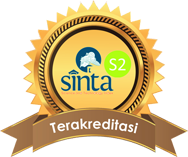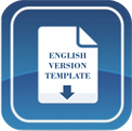Development of Integrated Assessment Instrument to Measure Critical Thinking Skills and Self-Efficiency in Acid-Base Concept
DOI:
https://doi.org/10.15575/jtk.v6i2.14872Keywords:
acid-base, integrated assessment, self-efficacyAbstract
The purpose of this research is to describe the stages of developing and validating a product which includes content validity and constructs validity. The method used is Research and Development (R&D) with define, design, develop, and disseminate (4D) model. The initial product was validated by material and learning evaluation expert lecturer. The suitability of the items evaluated by chemistry teacher based on indicators of competency achievement. The sample selection was determined by stratified random sampling of 170 students of 11th grade senior high school in Yogyakarta City. Content validity was analyzed using Aiken's V formula. The results of data analysis show that all components of the test instrument are valid with Aiken's V value greater than 0.80 with a significance of 0.05. Verification of construct validity was analyzed using exploratory factor analysis with the help of the SPSS version 21.0 program. The results prove that all components in the integrated assessment instrument are suitable to be used to measure the critical thinking skills and self-efficacy of students on acid-base concept.
References
Astuti, S. R. D., Suyanta, Lfx, E. W., & Rohaeti, E. (2017). An integrated assessment instrument: Developing and validating instrument for facilitating critical thinking abilities and science process skills on electrolyte and nonelectrolyte solution matter. AIP Conference Proceedings, 1847, 1-6. Retrieved from https://aip.scitation.org/doi/abs/10.1063/1.4983909
Asy’ari, M., Ikhsan, M., & Muhali, M. (2018). Validitas instrumen karakterisasi kemampuan metakognisi mahasiswa calon guru fisika. Prisma Sains : Jurnal Pengkajian Ilmu Dan Pembelajaran Matematika Dan IPA IKIP Mataram, 6(1), 19-26. https://doi.org/10.33394/j-ps.v6i1.955
Bandura, A. (1990). Perceived self-efficacy in the exercise of personal agency. Journal of Applied Sport Psychology, 2(2), 128–163. https://doi.org/10.1080/10413209008406426
Beavers, A. S., Lounsbury, J. W., Richards, J. K., Huck, S. W., Skolits, G. J., & Esquivel, S. L. (2013). Practical considerations for using exploratory factor analysis in educational research. Practical Assessment, Research and Evaluation, 18(6), 1–13. https://doi.org/10.7275/qv2q-rk76
Chi, M. T. H., De Leeuw, N., Chiu, M. H., & Lavancher, C. (1994). Eliciting self-explanations improves understanding. Cognitive Science, 18(3), 439–477. https://doi.org/10.1016/0364-0213(94)90016-7
Danczak. S. M., Thompson. C. D., Overton. T. L. (2017). 'What does the term critical thinking mean to you?’ A qualitative analysis of chemistry undergraduate, teaching staff and employers’ views of critical thinking. Chemistry Education Research and Practice, 18, 420-434. https://doi.org/10.1039/C6RP00249H
Danczak, S. M., Thompson, C. D., & Overton, T. L. (2020). Development and validation of an instrument to measure undergraduate chemistry students’ critical thinking skills. Chemistry Education Research and Practice, 21(1), 62-78. https://doi.org/10.1039/C8RP00130H
Dalgety, J., & Coll, R. K. (2006). Exploring first-year science students’ chemistry self-efficacy. Chemistry Education Research and Practice, 1(1), 2-17. Retrieved from https://link.springer.com/article/10.1007/s10763-005-1080-3
Dwyer, C. P., Hogan, M. J., & Stewart, I. (2014). An integrated critical thinking framework for the 21st century. Thinking Skills and Creativity, 12, 43–52. https://doi.org/10.1016/j.tsc.2013.12.004
Ennis, R. H., Millman, J., & Tomko, T. N. (1985). Cornell critical thinking tests (3rd ed.). Pacific Grove, CA: Midwest Publications.
Facione, P. A. (1990). Critical thinking: A statement of expert consensus for purposes of educational assessment and instruction. Millbrae, CA: California Academic Press.
Ferrell, B., Phillips, M. M., & Barbera, J. (2016). Connecting achievement motivation to performance in general chemistry. Chemistry Education Research and Practice, 17(4), 1054-1066. https://doi.org/10.1039/C6RP00148C
Field, A. (2009). Discovering statistics using SPSS (3rd ed). London: Sage Publication Ltd.
Flaherty, A. A. (2020). A review of affective chemistry education research and its implications for future research. Chemistry Education Research and Practice, 21(3), 698–713. Retrieved from https://doi.org/10.1039/C9RP00200F
Frey, R. F., Cahill, M. J., & McDaniel, M. A. (2017). Students’ concept-building approaches: A novel predictor of success in chemistry courses. Journal of Chemical Education, 94(9), 1185-1194. https://doi.org/10.1021/acs.jchemed.7b00059
Galloway, K. R., & Bretz, S. L. (2015). Development of an assessment tool to measure students’ meaningful learning in the undergraduate chemistry laboratory. Journal of Chemical Education, 92(7), 1149–1158. https://doi.org/10.1021/ed500881y
Gerritsen-van Leeuwenkamp, K. J., Joosten-ten Brinke, D., & Kester, L. (2019). Students’ perceptions of assessment quality related to their learning approaches and learning outcomes. Studies in Educational Evaluation, 63(1), 72–82. https://doi.org/10.1016/j.stueduc.2019.07.005
Hambleton, R. K. & Swaminathan, H. (1985). Item response theory. Boston, MA: Kluwer Inc.
Hensen, C., & Barbera, J. (2019). Assessing affective differences between a virtual general chemistry experiment and a similar hands-on experiment. Journal of Chemical Education, 96(10), 2097–2108. https://doi.org/10.1021/acs.jchemed.9b00561
Hoffman, B., & Schraw, G. (2009). The influence of self-efficacy and working memory capacity on problem-solving efficiency. Learning and Individual Differences, 19(1), 91–100. https://doi.org/10.1021/acs.jchemed.9b00561
Kartowagiran, B., Mardapi, D., Purnama, D. N., & Kriswantoro, K. (2019). Parallel tests viewed from the arrangement of item numbers and alternative answers. Research and Evaluation in Education, 5(2), 169-182. http://dx.doi.org/10.21831/reid.v5i2.23721
Kivunja, C. (2014). Innovative pedagogies in higher education to become effective teachers of 21st century skills: Unpacking the learning and innovations skills domain of the new learning paradigm. International Journal of Higher Education, 3(4), 37–48. Retrieved from https://eric.ed.gov/?id=EJ1067585
Kriswantoro, K. Amelia, R. N. & Irwanto (2016). Peningkatan kompetensi calon pendidik kimia melalui item response theory: strategi menghadapi masyarakat ekonomi asean. Prosiding Seminar Nasional Kimia dan Pendidikan Kimia VIII Program Studi Pendidikan FKIP UNS, 64–73. Retrieved from https://osf.io/preprints/inarxiv/nqf79/download
Lewis. R. Aiken. (1985). Three Coefficients For Analyzing The Reliability And Validity Of Ratings. Educational and Psychological Measurement, 45, 131-141. https://doi.org/10.1177%2F0013164485451012
Mahanal, S., Zubaidah, S., Sumiati, I. D., Sari, T. M., & Ismirawati, N. (2019). RICOSRE: A learning model to develop critical thinking skills for students with different academic abilities. International Journal of Instruction, 12(2), 417-434. Retrieved from https://eric.ed.gov/?id=EJ1211048
Pyburn, D. T., Pazicni, S., Benassi, V. A., & Tappin, E. E. (2013). Assessing the relation between language comprehension and performance in general chemistry. Chemistry Education Research and Practice, 14(4), 524-541. https://doi.org/10.1039/C3RP00014A
Rasmawan, R. (2020). Development of SETS-based teaching materials in acid-base accompanied by critical thinking exercises and moral forming. EduChemia (Jurnal Kimia Dan Pendidikan), 5(2), 134. http://dx.doi.org/10.30870/educhemia.v5i2.7934
Redhana, I. W. (2019). Mengembangkan keterampilan abad ke-21 dalam pembelajaran kimia. Jurnal Inovasi Pendidikan Kimia, 13(1), 2239-2253. https://doi.org/10.15294/jipk.v13i1.17824
Retnawati, H. (2014). Teori respon butir dan penerapannya (untuk peneliti, praktisi pengukuran, dan pengujian mahasiswa pascasarjana). Yogyakarta: Nuha Medika.
Reynders, G., Suh, E., Cole, R. S., & Sansom, R. L. (2019). Developing student process skills in a general chemistry laboratory. Journal of Chemical Education, 96(10), 2109-2119. https://doi.org/10.1021/acs.jchemed.9b00441
Sadhu, S., & Laksono, E. W. (2018). Development and validation of an integrated assessment for measuring critical thinking and chemical literacy in chemical equilibrium. International Journal of Instruction, 11(3), 557-572. Retrieved from https://eric.ed.gov/?id=EJ1183420
Salirawati, D. (2011). Pengembangan instrumen pendeteksi miskonsepsi kesetimbangan kimia pada peserta didik SMA . Jurnal Penelitian dan Evaluasi Pendidikan, 15(2), 232-249. http://dx.doi.org/10.21831/pep.v15i2.1095
Saputri, N., Adlim, A., & Inda Rahmayani, R. F. (2018). Pengembangan Instrumen Penilaian Psikomotorik Untuk Praktikum Kimia Dasar. JTK (Jurnal Tadris Kimiya), 3(2), 114-124. Retrieved from https://core.ac.uk/download/pdf/234031096.pdf
Sari, L. P. N., Fajarianingtyas, D. A., & Hidayat, J. N. (2020). Validitas instrumen penilaian kemampuan berpikir kritis melalui model problem based learning menuju pembelajaran IPA abad ke-21. LENSA (Lentera Sains): Jurnal Pendidikan IPA, 10(2), 125–136. https://doi.org/10.24929/lensa.v10i2.121
Sarigoz, O. (2012). Assessment of the high school students’ critical thinking skills. Procedia - Social and Behavioral Sciences, 46, 5315-5319. https://doi.org/10.1016/j.sbspro.2012.06.430
Saxton, E., Belanger, S., & Becker, W. (2012). The critical thinking analytic rubric (CTAR): Investigating intra-rater and inter-rater reliability of a scoring mechanism for critical thinking performance assessments. Assessing Writing, 17(4), 251–270. https://doi.org/10.1016/j.asw.2012.07.002
Shavelson, R. J., Zlatkin-Troitschanskaia, O., Beck, K., Schmidt, S., & Marino, J. P. (2019). Assessment of university students’ critical thinking: next generation performance assessment. International Journal of Testing, 19(4), 337-362. https://doi.org/10.1080/15305058.2018.1543309
Shaw, A., Liu, O. L., Gu, L., Kardonova, E., Chirikov, I., Li, G., Hu, S., Yu, N., Ma, L., Guo, F., Su, Q., Shi, J., Shi, H., & Loyalka, P. (2020). Thinking critically about critical thinking: validating the russian heighten® critical thinking assessment. Studies in Higher Education, 45(9), 1933-1948. https://doi.org/10.1080/03075079.2019.1672640
Sumarni, W., Supardi, K. I., & Widiarti, N. (2018). Development of assessment instrument to measure critical thinking skills. IOP Conference Series: Materials Science and Engineering, 349(1), 1-11. Retrieved from https://iopscience.iop.org/article/10.1088/1757-899X/349/1/012066/meta
Sumarni, Woro, Sudarmin, S., Wiyanto, W., & Supartono, S. (2016). Preliminary analysis of assessment instrument design to reveal science generic skill and chemistry literacy. International Journal of Evaluation and Research in Education (IJERE), 5(4), 331-340. Retrieved from https://eric.ed.gov/?id=EJ1132223
Sternod. L., & French. B. (2015). The Watson–Glaser™ II critical thinking appraisal. Journal of Psychoeducational Assessment Pullman, USA: Washington State University.
Tan, K. S., Goh, N. K., & Chia, L. S. (2006). Bridging the cognitive-affective gap: teaching chemistry while advancing affective objectives: the singapore curricular experience. Journal of Chemical Education, 83(1), 59–63. https://doi.org/10.1021/ed083p59
Utami, B., Saputro, S., Ashadi, A., Masykuri, M., & Widoretno, S. (2017). Critical thinking skills profile of high school students in learning chemistry. International Journal of Science and Applied Science: Conference Series, 1(2), 124-130. http://dx.doi.org/10.20961/ijsascs.v1i2.5134
Utomo, T., & Ruijter, K. (1994). Peningkatan
dan pengembangan pendidikan. Jakarta: Gramedia Pustaka Utama.
Uzuntiryaki-Kondakçi, E., & Çapa-Aydin, Y. (2013). Predicting critical thinking skills of university students through metacognitive self-regulation skills and chemistry self-efficacy. Kuram ve Uygulamada Egitim Bilimleri, 13(1), 666–670. Retrieved from https://eric.ed.gov/?id=EJ1016667
Xu, X., & Raker, J. R. (2016). Self-efficacy and academic performance in first-semester organic chemistry: testing a model of reciprocal causation. Chemistry Education Research and Practice, 1(1), 1-9. https://doi.org/10.1039/C6RP00119J
Zimmerman, B. J. (2000). Self-Efficacy: An Essential Motive to Learn. Contemporary Educational Psychology, 25(1), 82–91.
ŽivkoviĿ, S. (2016). A model of critical thinking as an important attribute for success in the 21st century. Procedia – Social and Behavioral Sciences, 232(4), 102–108. https://doi.org/10.1039/C6RP00119J
Zoller, U. (2001). Alternative assessment as (critical) means of facilitating hocs-promoting teaching and learning in chemistry education. Chemistry Education: Research and Practice in Europe, 2(1), 9–17. https://doi.org/10.1039/B1RP90004H
Downloads
Published
How to Cite
Issue
Section
Citation Check
License
Authors who publish with this journal agree to the following terms:
- Authors retain copyright and grant the journal right of first publication with the work simultaneously licensed under a Creative Commons Attribution-ShareAlike that allows others to share the work with an acknowledgement of the work's authorship and initial publication in this journal.
- Authors are able to enter into separate, additional contractual arrangements for the non-exclusive distribution of the journal's published version of the work (e.g., post it to an institutional repository or publish it in a book), with an acknowledgement of its initial publication in this journal.
- Authors are permitted and encouraged to post their work online (e.g., in institutional repositories or on their website) prior to and during the submission process, as it can lead to productive exchanges, as well as earlier and greater citation of published work (See The Effect of Open Access).








